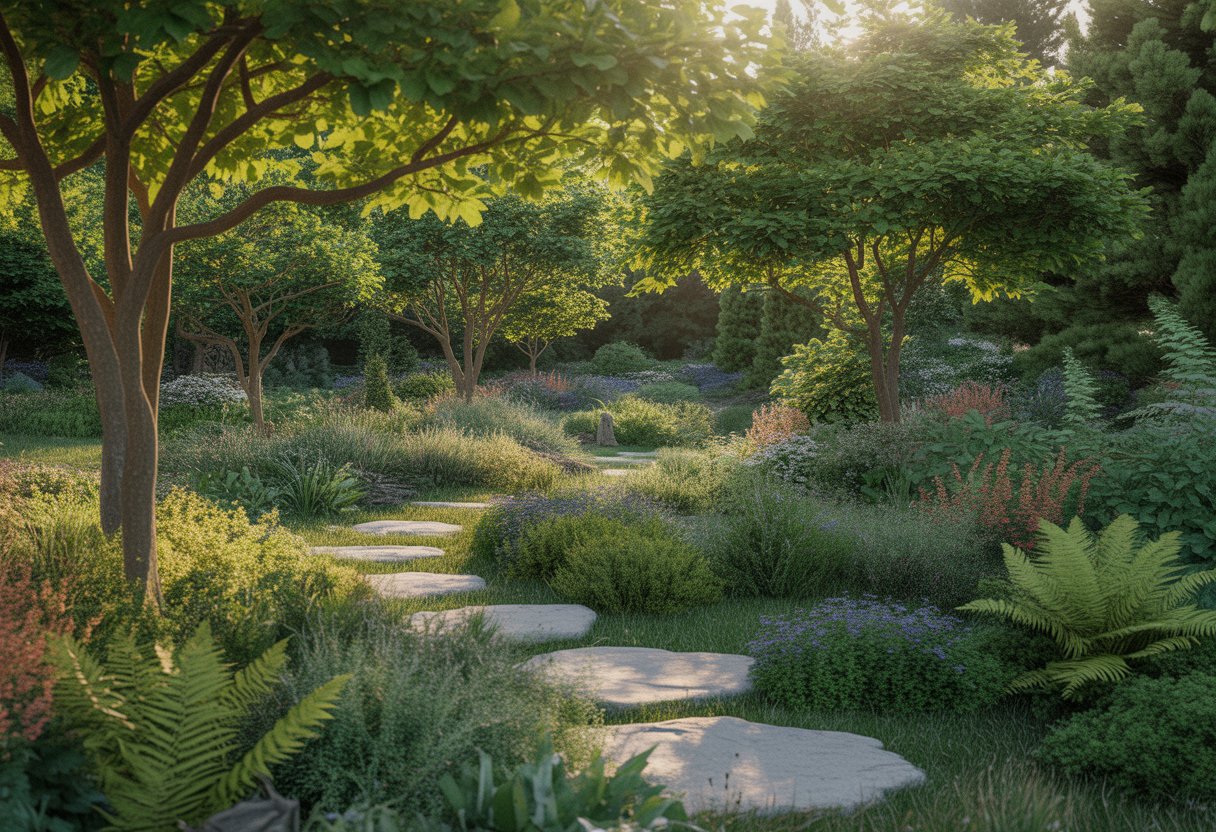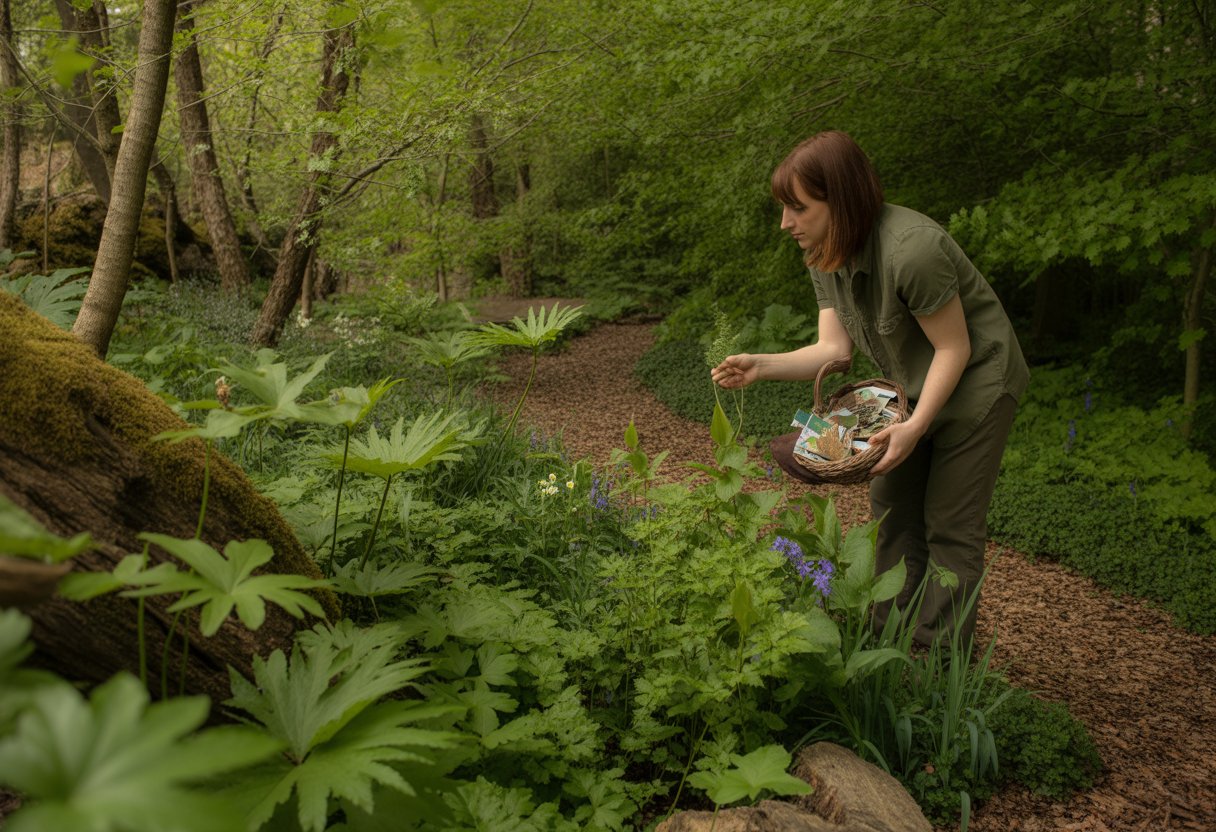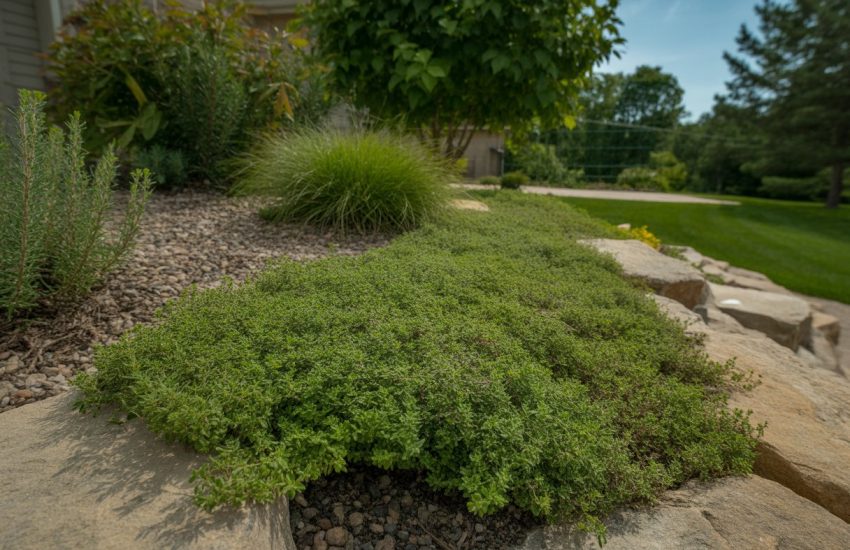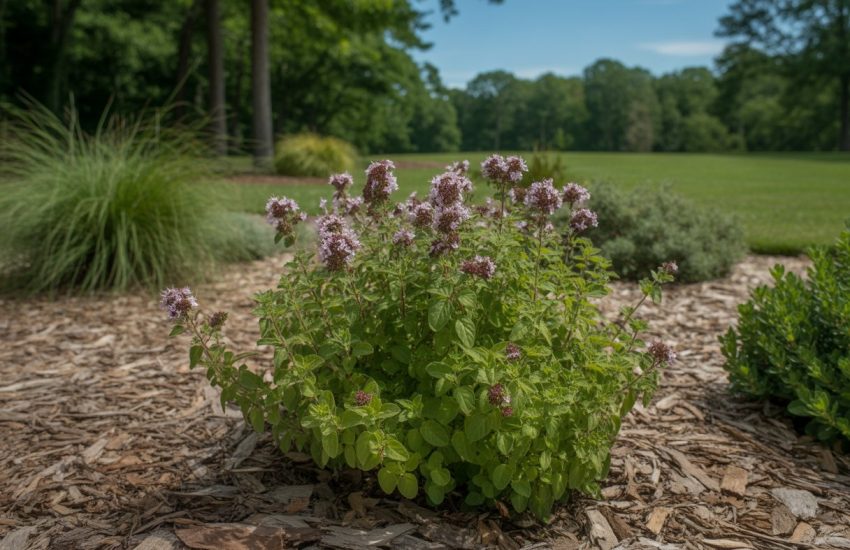Woodland Garden Design with Natives for Sustainable and Natural Landscapes
Creating a woodland garden design with native plants is a practical way to build a sustainable, low-maintenance landscape. Native species support local ecosystems, need less water, and thrive in the soil and climate you already have.
This approach helps gardeners achieve a natural look while boosting biodiversity. You’re not just planting for yourself—you’re helping the whole neighborhood of plants and critters.

A well-planned woodland garden copies the structure of real forests, layering trees, shrubs, and groundcover for balance. Choosing native plants thoughtfully leads to healthier growth and less need for chemicals.
Gardening with natives connects you to your region’s landscape and the changing seasons. It also creates a lively space for pollinators and wildlife, so your garden feels alive instead of static.
Principles of Woodland Garden Design With Natives
You’ll have the most luck with native woodland gardens if you pay close attention to local ecosystems, know your site, and lean into a naturalistic approach. Watch how plant communities, soil, and light interact—those details set the stage for a sustainable, authentic garden.
Understanding Native Plant Communities
Native plant communities form over time through complicated relationships. They adapt to the local climate and soil, creating a system that just works.
In a woodland garden, copying these communities builds resilience and diversity. Pick plants that naturally coexist—shade-loving wildflowers, understory shrubs, and native trees—and you’ll get a stable ecosystem.
Recognize the layers in a woodland: canopy, understory, shrub, and ground cover. Each layer has its own job, from cycling nutrients to providing habitat.
Designing with vertical structure in mind encourages plants to grow naturally and gives wildlife more options.
The Role of Soil and Shade in Woodland Gardens
Soil quality and shade levels have a huge impact on which native species will do well. Most woodland natives want well-drained, humus-rich soils that stay evenly moist.
Test your soil’s texture and pH before planting—it really helps with picking the right species. Shade defines woodland gardens, but it’s not all the same.
Some spots get dappled light, others are deep shade. Match your plants to the light they’ll get, and you’ll save yourself a lot of headaches.
Ferns love deep shade, while spring ephemerals prefer more sunlight before the trees leaf out.
Creating a Naturalistic Design
A naturalistic design mimics the randomness and variety of native ecosystems. Forget formal, symmetrical layouts.
Go for irregular groupings and mixed species to echo how plants grow in the wild. Arrange plants by compatibility, and give them enough space to fill in naturally.
Tuck native groundcovers and perennials between shrubs and trees to avoid bare patches and create a woodland floor vibe. Paths and focal points should feel like they belong—subtle, winding, and never too obvious.
Selecting and Sourcing Native Woodland Plants

When you’re picking native woodland plants, think about how they grow and what they need. Layering different types creates a balanced, natural ecosystem.
Finding a good source for your plants makes a big difference—healthy, regionally adapted plants will just do better.
Choosing the Right Native Species
The foundation of a great woodland garden is choosing natives that fit your local conditions. Trees like flowering dogwood and redbud bring structure and seasonal beauty.
Understory shrubs such as oakleaf hydrangea and viburnum offer texture and berries for wildlife. For perennials, try columbine, bleeding heart, and trillium—they thrive in dappled shade and add bursts of color.
Early bloomers like bloodroot and jack-in-the-pulpit can stretch out your flowering season. Always match plants to your soil’s moisture and light so you don’t set them up for stress.
Mixing species with different bloom times and shapes brings more biodiversity. Skip invasive or non-native plants—stick with what belongs.
Make sure your choices fit the mature size and spacing you want, so you’re not constantly wrangling overgrown plants.
Layering Shrubs, Perennials, and Groundcovers
Layering is key—it’s how real woodlands work. Tall trees form the canopy, shrubs fill the middle, and shade-loving perennials cover the ground.
Shrubs like viburnum support birds and insects, while perennials such as blazing star add vertical variety and attract pollinators. Groundcovers like wild ginger help with weed control and keep the soil moist.
Give your plants enough space so they’re not fighting for room as they grow. Pair fast-growing shrubs with slower perennials to balance things out.
Good layering means less maintenance and healthier growth down the line.
Working With Native Plant Nurseries
Native plant nurseries specialize in species that fit your region’s woodland habitats. They grow plants from local seed, which boosts your chances of success.
Nursery staff can help you pick plants that match your site’s conditions. Visiting in person lets you check plant health and maturity—important for transplant success.
Some nurseries carry hard-to-find natives like jack-in-the-pulpit or blazing star. Buying when plants are in season helps them settle in without extra stress.
Supporting native nurseries also helps conservation and lowers the risk of bringing in invasive species. Many offer planting and care tips that are spot-on for woodland gardens.
Designing for Wildlife and Seasonal Appeal
Adding native plants is a great way to support wildlife while making your garden more interesting as the seasons change. Smart plant choices and features keep the landscape lively all year.
Attracting Butterflies and Hummingbirds
If you want butterflies and hummingbirds, plant native flowers with tubular shapes and bold colors. Milkweed and bee balm are top picks—they’re nectar sources these pollinators can’t resist.
Group flowers together instead of scattering them, since butterflies and hummingbirds like big patches of food. Include host plants for caterpillars, like violets for fritillaries, to support the whole life cycle.
Skip pesticides, and set out shallow dishes with stones for water. Plant flowers in sunny spots with some wind protection to keep pollinators happy.
Emphasizing Leaf Color and Texture
Leaf color and texture add interest all year, even when flowers aren’t blooming. Dogwoods show off bright reds in fall, while ferns bring soft, feathery greens all season.
Mix broadleaf evergreens with deciduous shrubs for contrast. Look for variety in leaf shape and feel—smooth, serrated, or even a little fuzzy.
Pick species with staggered color changes, from spring greens to autumn reds and golds. Combining native maples, oaks, and viburnums gives you a mix of color and texture that never gets boring.
Edging and Pathways for a Wild Look
For edges, use low-growing native groundcovers like wild ginger or creeping phlox. They define garden beds without sharp lines, letting everything blend naturally.
Skip concrete or metal for paths—bark mulch or crushed stone feels more at home in a woodland. Let paths wind and curve, like real forest trails.
Toss in some stepping stones or logs for texture and a rustic vibe. Accent the edges with native sedges or grasses to soften transitions and keep things looking wild and relaxed.
Caring for Woodland Gardens With Native Plants

Keeping a woodland garden healthy means watching your soil quality, moisture, and light. Natural pest control and promoting biodiversity help keep everything in balance.
Managing Soil and Growing Conditions
Woodland natives do best in well-drained, nutrient-rich soil with plenty of organic matter. Let leaf litter and mulch break down naturally to feed the soil—no need to overwork it.
Add compost or aged mulch now and then to support soil microbes. These little guys are crucial for plant health.
Keep the soil moist but not soggy. Shaded areas help the soil hold moisture and protect roots.
Aim for a slightly acidic to neutral pH (5.5 to 7) if you can—most woodland natives like it that way. Light varies a lot in woodlands, so pick plants for partial or full shade.
Keep an eye on sunlight and move plants if needed. Sometimes you just have to experiment to get it right.
Encouraging Plant Health and Natural Balance
When you attract beneficial insects and birds, they help keep pests in check. This means you can use fewer chemicals in your garden.
Bringing in native pollinators makes a big difference for plant reproduction. It also nudges the ecosystem toward a better balance.
If you spot invasive species, pull them out before they crowd out your native plants. These invaders compete for nutrients and space, which nobody wants.
If your plants look stressed, take a closer look. Check for pests, disease, or maybe just the wrong growing conditions.
Pruning doesn’t have to be intense, but it matters. Cutting away dead or damaged branches lets air move better and lowers the risk of disease.
Mulch is kind of a secret weapon. It keeps moisture in, blocks weeds, and helps the soil stay at a steady temperature—almost like a forest floor.


